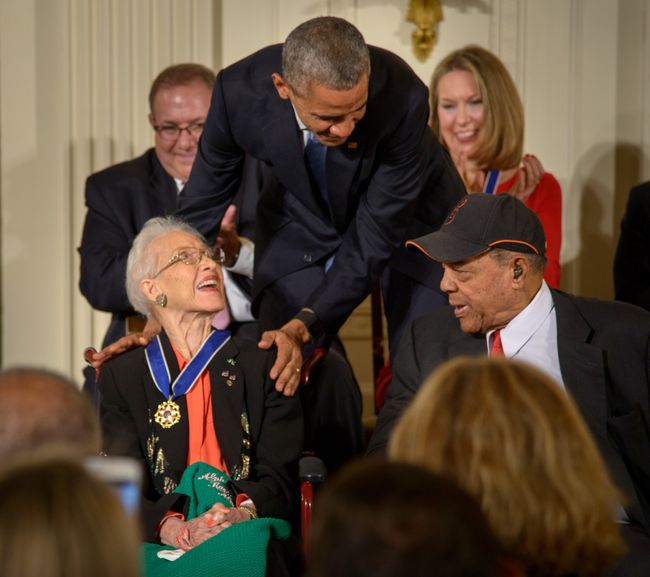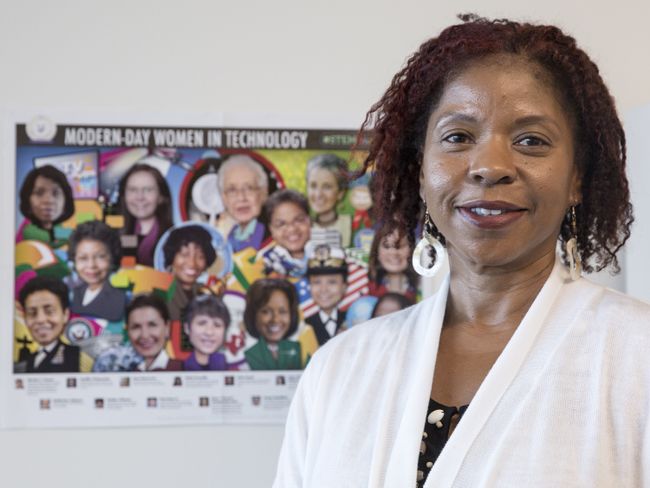Hey, Mom! Talking to My Mother #1161 - Meet the Black Female NASA genius who helped send the first American into space - a sense of doubt post #1515
I had planned some original content for today but between work and family life that didn't happen. But the original content is in production, stay tuned.
Meanwhile, I reached all the way back in the "archive," IE. the unpublished drafts, and found this one set up three years ago.
I have since watched the film Hidden Figures about three times. I may watch it again. I like it despite its schmaltz factor.
Were There Any Women in NASA? (Video)
Meet the Black Female NASA Genius Who
Helped Send the First American Into Space
August 26, 2016by NATALIE
RIVERA
Katherine Johnson was one of
the pioneering black female mathematicians behind NASA's first space voyages,
yet most of us never learned about her in our history classes. Here's why.
http://www.popsugar.com/news/Were-Any-Women-NASA-Video-41448079
“You are as good as anyone in this town, but you are no better than any of them,” says retired @NASA_Langley mathematician Katherine Johnson, who celebrates her 100th birthday today. Discover other life lessons from this trailblazer: https://t.co/FliCMfFYDt #Happy100Katherine pic.twitter.com/s0KIhj704W— NASA (@NASA) August 26, 2018
https://www.space.com/41638-katherine-johnson-celebrates-100th-birthday.html
Katherine
Johnson, Trailblazing NASA Mathematician, Celebrates 100 Trips Around the Sun
Katherine Johnson — a mathematician at NASA's Langley Research
Center in Virginia who helped make human spaceflight possible — celebrated 100
trips around the sun this weekend.
Johnson, one of NASA's "human computers" whose
calculations propelled NASA spacecraft to the stars, turned 100 on Aug. 26.
Johnson is a retired NASA Langley mathematician who was integral to developing human
spaceflight in America. Johnson, who was played by Taraji P.
Henson in the feature film "Hidden
Figures," began her career at NASA on a team of black women who were also
referred to as "human computers." Like the other women in this group,
Johnson broke down barriers as an African-American woman, despite anti-black
prejudice.
 |
President Barack Obama presents Katherine Johnson with the Presidential Medal of Freedom for her groundbreaking contributions to spaceflight on Nov. 24, 2015.
(Image: © NASA/Bill Ingalls)
|
NASA honored Johnson on
her birthday and reminded the world of her unparalleled contributions to human
spaceflight. A number of women doing incredible work at NASA expressed how
Johnson's work inspired them along the way. "She opened the doors for the
rest of us," Julie Williams-Byrd, Langley's acting chief technologist, said in a statement at
NASA Langley. [The Women Computers of NASA's Jet
Propulsion Laboratory (Slideshow)]
An unstoppable force and a role model to young
African-American women, Johnson began her career at NASA's Langley Research
Center in 1953 after one of her relatives told her about open positions at an
all-black West Area Computing section at the National Advisory Committee for
Aeronautics' (NACA's) Langley laboratory. The lab was headed by Dorothy
Vaughan, who came from West Virginia, just as Johnson did.
Johnson analyzed flight test data and even completed
trajectory analysis for Freedom 7, America's first human spaceflight. She
co-authored the paper Determination of Azimuth Angle at Burnout for Placing a
Satellite Over a Selected Earth Position, which detailed the equations that
describe an orbital spaceflight where the craft's landing position is
specified. This was the first time that a woman received author credit for a
research report in the Flight Research Division.
Johnson's most famous work, spotlighted in "Hidden
Figures," was for John Glenn's orbital mission in 1962. The mission
required a complicated worldwide communications network. The mission's orbital
calculations, which controlled the trajectory of the capsule for the mission, were
programmed by a computer, but Glenn asked engineers to "get the girl"
— referring to Katherine Johnson — to validate the calculations. She ran the
same calculations by hand that the computer had run, and Glenn said, according
to Johnson, "If she says they're good, then I'm ready to go."
Her legendary
career with NASA lasted from 1953 to 1986.
Email
Chelsea Gohd at cgohd@space.com or
follow her @chelsea_gohd.
Follow us @Spacedotcom, Facebook and Google+. Original article on Space.com.
Today, retired @NASA_Langley mathematician Katherine Johnson makes her 100th trip around the Sun as she celebrates her birthday! Send her birthday wishes using #Happy100Katherine & learn about her calculations that launched @NASA_Astronauts to space 🚀: https://t.co/Iv2DqAt1LK pic.twitter.com/DVvVYnrupe— NASA (@NASA) August 26, 2018
http://boingboing.net/2016/09/14/when-computers-were-young.html
When "computers" were young, brilliant black women mathematicians
Margot Lee Shetterly's Hidden Figures recovers the lost history of the young
African American women who did the heavy computational work of the Apollo
missions, given the job title of "computer" -- her compelling book
has been made into a new motion picture.
One such woman was
Katherine G. Johnson. At 98, she still lives in Hampton, and has emerged as the
most high-profile of the computers. In the last year, she’s won the
Presidential Medal of Freedom, saw a building named after her and had a bench
dedicated in her honor. On her birthday, in late August,
#HappyBirthdayKatherineJohnson started trending on Twitter. In a few months,
Henson, an Oscar nominee, will play her on-screen.
Like a lot of the other
computers, Johnson studied math in college. She was also one of three graduate
students to desegregate West Virginia University in 1940, but marriage and a
family derailed her plans for an advanced degree. At NASA, she worked on the
life-or-death task of determining launch timing. Her calculations helped propel
Alan Shepard into space and guided him successfully back to Earth; they landed
Neil Armstrong on the moon and brought him home.
She never talked about
work much, her daughter Joylette Hylick said recently.
“To come home and start
talking about complex equations wouldn’t go over with teenagers,” Hylick
explained. Plus, “we had activities — church, sports, music lessons, the whole
nine, so it was quite a full life. She was not a stay-at-home but she also was
not a workaholic in the sense that everything revolved around that.”
The nearly forgotten story of the black women who helped land a man on the moon
[Stephanie Merry/Washington Post]
Hidden Figures [Margot
Lee Shetterly/William Morrow]
(Thanks, Jeremy!)
SHARE / TWEET / 7 COMMENTS
BOOKS / GENDER / HAPPY MUTANTS / HISTORY / MATH IN THE TIME OF JIM CROW / MATHEMATICS / MOVIES / NASA / RACE / SPACE / VIDEOS / YOUTUBE
+++++++++++++++++++++++++++++++++++++++++++++++++++++++++++++++++++++++
+++++++++++++++++++++++++++++++++++++++++++++++++++++++++++++++++++++++
Reflect and connect.
Have someone give you a kiss, and tell you that I love you.
I miss you so very much, Mom.
Talk to you tomorrow, Mom.
+++++++++++++++++++++++++++++++++++++++++++++++++++++++++++++++++++++++
+++++++++++++++++++++++++++++++++++++++++++++++++++++++++++++++++++++++
+++++++++++++++++++++++++++++++++++++++++++++++++++++++++++++++++++++++
- Days ago = 1380 days ago
- Bloggery committed by chris tower - 1904.14 - 10:10
NOTE on time: When I post late, I had been posting at 7:10 a.m. because Google is on Pacific Time, and so this is really 10:10 EDT. However, it still shows up on the blog in Pacific time. So, I am going to start posting at 10:10 a.m. Pacific time, intending this to be 10:10 Eastern time. I know this only matters to me, and to you, Mom. But I am not going back and changing all the 7:10 a.m. times. But I will run this note for a while. Mom, you know that I am posting at 10:10 a.m. often because this is the time of your death.


No comments:
Post a Comment